Raised beds are freestanding beds built above the natural grade of the soil. The plantation area is raised above the existing soil level and is usually enclosed within a structure to form a planting bed. The design of raised beds can be formal or informal, rectangular or irregular in shape. A raised bed doesn’t have to be too deep.
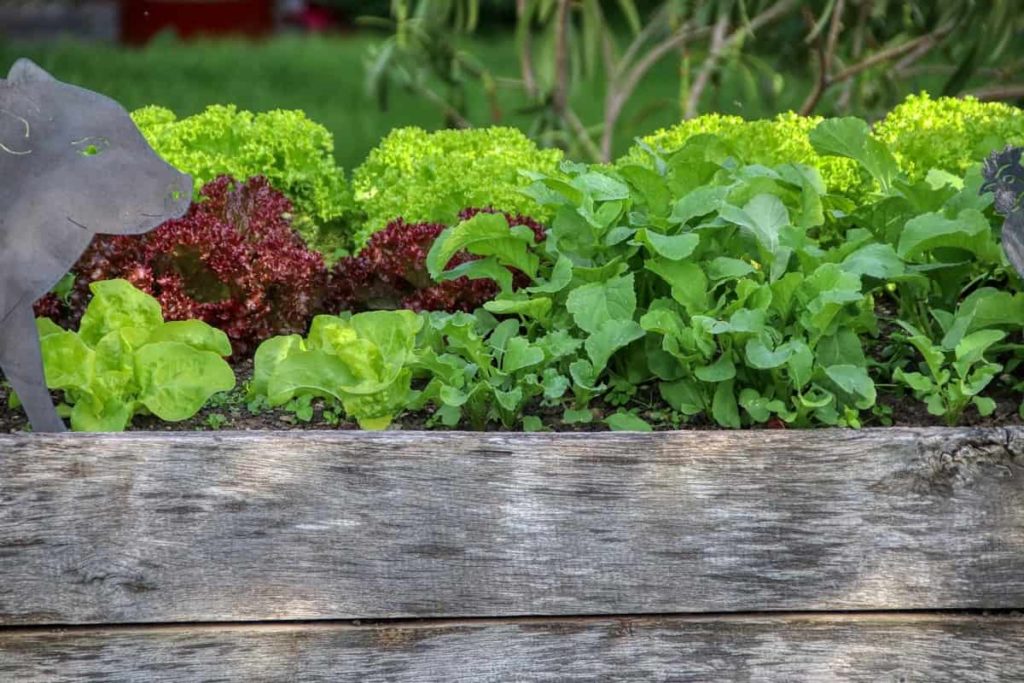
Raised beds are gaining popularity. Weeds are easy to prevent, and a quality raised bed can last long. Many are built of wood, others of brick or rock. Raised beds are often more productive than ground beds because the soil is less compact, drainage is better, and warmer in early spring, so plants will start growing earlier in the season.
How to build raised beds for home garden
What is the best material to use to build a raised garden bed?
- Wood will insulate your soil much better than galvanized steel, which makes wood ideal for building raised beds with a cool frame for winter gardening.
- Wood is the most common material for use in raised beds. Untreated pine or spruce are good, cheap options. Unlike pressure-treated wood, untreated or heat-treated wood does not contain any questionable chemical compounds that can leach into the soil within the bed.
- The best wood for garden beds is Cedar because it is naturally rot resistant. In the best conditions, they will last for 10 to 20 years. However, long-lasting materials are also available. Therefore, building garden beds with Cedar and redwood are the best choice.
- Wood treated with chromatid copper arsenate can leach arsenic, a toxic compound. Plants growing in a garden bed can carry chemicals. CCA-treated lumber should not be used for raised beds and should only be restricted to construction work.
What is the cheapest material to build raised garden beds?
- Cedar is the cheapest and naturally resistant to rot caused by natural oil in the wood. Redwood is very expensive but rot-resistant and has a long lifespan. Douglas Fir is a much cheaper option but won’t last as long as redwood or Cedar in terms of longevity.
- Pine is the cheapest but will rot after a few years. The hemlock will last a bit longer. Rot-resistant woods, such as Cedars, redwoods, or locusts, will last longer; Cedar is the top choice because it is both rot and durable, staying for 10 to 15 years.
- Enlarged pine beds last an average of five years, but it depends on the weather, pests, and whether you use treated or treated pine. Treated pine will likely last more than five years, but the chemicals in the treatment are generally thought to affect plant growth and production safety negatively.
- Grass clippings are a good option to add to your raised garden beds as a top dressing. They help your beds retain moisture, suppress weeds, and add nutrients to your plants. You can only spread a few inches on the surface of the beds. As the clippings dissolve, the height of the mulch will drop.
Should a raised bed have a bottom?
- Usually, raised beds have no bottom, they are open to the ground, and plants allow the roots into the ground for available nutrients.
- If you have pest problems or experience a lot of water in your garden, your raised bed may need a bottom. It’s especially because it helps when your raised soil mixes with the soil on the ground, but it helps keep your plants safe.
- You should fill the bottom of a raised bed with organic materials, including straw, grass clippings, wood chips, and leaves. Place cardboard or any suitable weed barrier material on top of this organic layer, and weigh it with a few bricks or pegs.
How deep should a garden-raised bed be?
- A raised bed doesn’t have to be too deep to be effective. Eight to 12 inches is usually enough. If drainage is a problem, the bed may be tall and full of a porous growing medium.
- You can use another 12 inches or more of suitable soil under the bed for best results. This gives your plants at least 18 to 20-inch soil. This is because the soil gets compressed after several waterings. Some plants with long roots will require soil 36 inches deep.
In case you missed it: Fast Blooming Flowers to Grow from Seeds: Indoors, Pots, Backyard, and Raised Bed
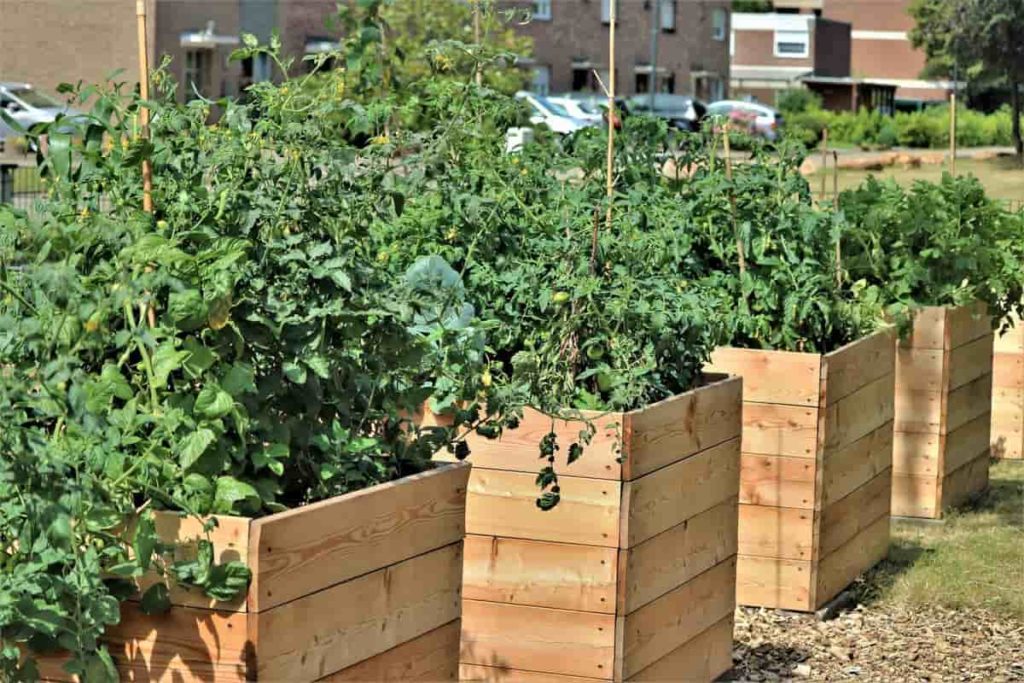
Can I put holes in the bottom of a raised garden bed?
- It’s essential to drill holes under your raised garden bed as they facilitate drainage. If you accidentally give more water to the soil, the excess water will drain from these openings. While some types of plants tolerate wet soil, most plants require moist, well-drained soil, requiring properly raised bed garden drainage.
- In a raised bed to improve drainage, loosen the soil, attract worms to your raised bed, and add the right soil amendments such as compost, perlite, or vermiculite. If you haven’t built your raised bed yet, choose a good site, use a good drainage system, and choose the proper elevation for your raised bed.
- Holes will not only prevent your plants from overwatering or going underwater, but they can also reduce the risk of various diseases associated with water problems, such as root rot. In addition, several insects will target plants growing in poorly drained soil.
- When you buy garden beds online, make sure it has drainage holes under the planter to let the water run out. If you’re making a raised bed, don’t forget to drill a 1/4″ hole every 9 to 12-inch intervals in each direction.
Can I use fence posts for raised beds?
- Make your fence posts about two inches long from the fence, as this allows you extra space to secure the posts on the garden bed. Then, secure your fence posts on the garden bed itself. Line your posts along the bottom of your raised bed and use your L-bracket, drill, and screw to secure it.
- If you use Cedar fence posts, a raised garden bed in your backyard will be sturdy and lasting. These posts will last up to 15 years, so you don’t have to worry about the garden bed breaking down or rotting prematurely. The Cedar fence posts are 6 or 8 feet long and about 4 inches wide.
In case you missed it: Top 25 Vegetables to Grow on Raised Beds
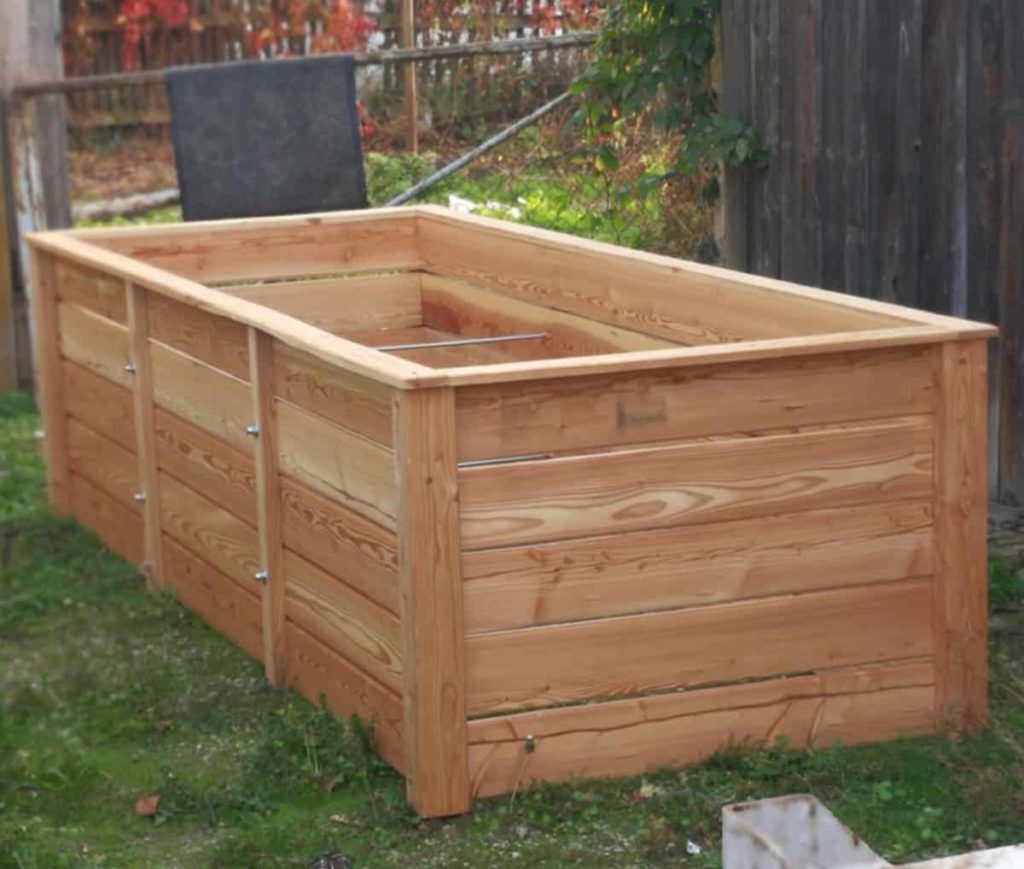
Is galvanized steel safe for garden beds?
- Galvanized steel is a tough material. Even when subjected to it outdoors, you can still expect the galvanized steel-raised bed to last for at least thirty years.
- Galvanized beds are safe for gardening use. Since it requires acidity to break the zinc coating that is galvanized steel and most garden soils are neutral, there is no impact. In addition, zinc is an essential plant micronutrient and a standard part of the soil. The galvanized steel material, conduits, and corner covers will last 30 to 60 years. Cedar support will probably be somewhat closer, around 15 to 20 years.
Do I need to line my raised garden bed?
- You can line up to make your raised bed more durable and prevent toxins from leaching into the soil. For lining, use landscape fabric found on clothing from garden supply stores or fabrics.
- You should line up the raised garden bed because the pros outweigh the disadvantages. A liner for your raised garden bed protects the ground from extreme temperatures, keeps moles and gophers out, and prevents weeds from growing.
- Avoid lining garden beds with plastic, as it prevents drainage and can submerge the roots of your plants. If you have a problem with weeds and pests, consider installing a combination of metal mesh and fabric or hardware cloth and cardboard to get both benefits simultaneously.
Can I fill a raised bed with just compost?
- If the compost matures well, the use of compost alone in your raised beds can work for some plants, but it can also be harmful to other plants. Using the top soil alone in your raised beds is not a good choice. Similarly, the use of compost alone is also not the best option.
- You can cover the soil with three to four inches of organic mulch (dried leaves or straw). Compost and mulch will be biodegraded during winter, adding essential nutrients to your raised garden bed and ensuring another bumper crop next year.
- The first option to fill your beds is a simple soil mixture. Fill your bed with a 1:1 mixture of topsoil and compost mix, then lightly mix with a rack or shovel.
In case you missed it: Best Plants For Raised Bed Gardens
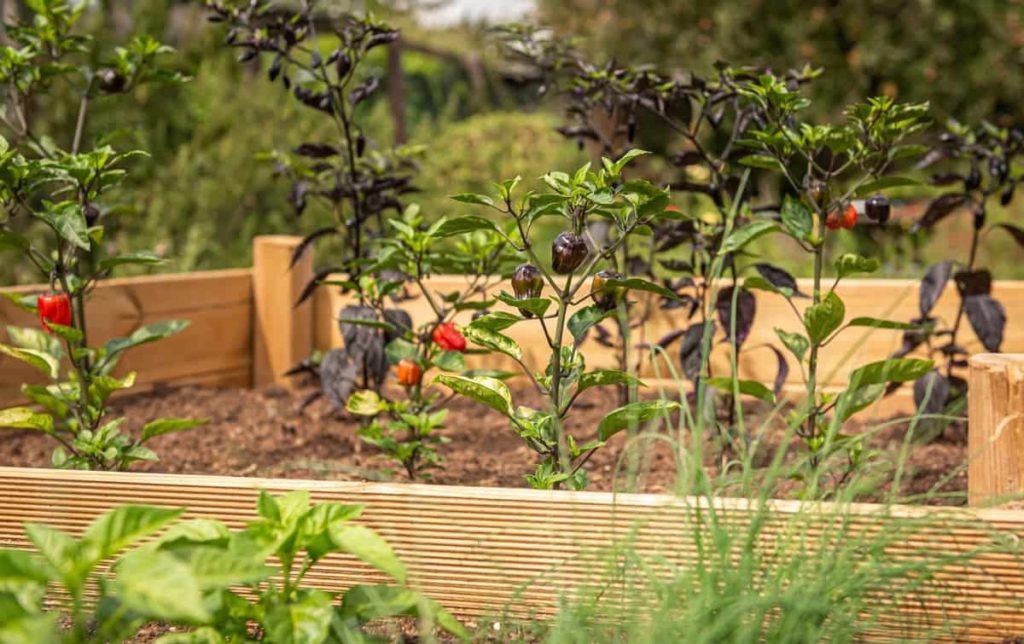
Is 12 inches deep enough for tomatoes?
- A raised bed doesn’t have to be too deep to be effective. Like most vegetables, tomatoes are well drained, nitrogen-rich soil with a pH of around 6.5. Growing up in a raised bed allows you to create the best conditions for your tomato plants rather than trying to modify your native soil to get just the right conditions.
- Tomatoes, which benefit from deep planting, require about 24 to 36 inches of depth for their roots to grow. However, the plant’s growth can be slightly stunted if your raised bed is about a foot high.
- Calculate the estimated volume of soil required for the project by measuring the length greater than the width of the raised bed; the bed should be at least 12 inches deep to grow and allow proper drainage. Edge materials may include umber, cinderblocks, or stones.
How deep should a vegetable garden be?
- Some plants need a depth of two feet for their roots, so the extra height is mostly only for the ease and convenience of the gardener.
- Pumpkin, Winter Squash, and Watermelon extend their roots 24 to 36 or more inches. These plants and their roots support long vine structures in long growing seasons. As a general rule, place tall veggies on the back of the bed, medium-sized vegetables, and small plants on the front or border.
How do I protect my wood raised garden beds?
- Install the liner – Liner is any non-permeable material used to restrict raised bed soil from the ground.
- Use Treated Wood – Treated wood is any wood coated with chemicals and oil to prevent moisture and pests from reaching the wood.
- Treat untreated wood before installation – You should treat the wood to increase its durability and prevent it from rotting.
- Insert a Layer of Barrier – You should insert objects like stones, twigs, etc., between the soil and the frame. This barrier prevents water or moisture from accumulating on the wooden frame as the water can easily drain away.
- Place the wooden frame on a raised bed foundation – Moisture is high in areas close to the ground, so if you should use untreated wood, you need to install wood away from the ground.
How do I arrange plants in a raised bed?
- There are two basic principles when arranging plants in beds. 1) Place individual plants so that they touch each other when they reach their mature size, and 2) Overlap the mass of the plants and fold them so that they flow without space between them. Avoid gaps or large open spaces between the public.
- Design the layout of the plants with the tallest plants to grow along the center line of the raised bed. You should plant medium-height plants on both sides, such as Peppers. Finally, locate the shortest plants like Radish and Carrots along the edges of the bed.
In case you missed it: Raised Bed Gardening Frequently Asked Questions
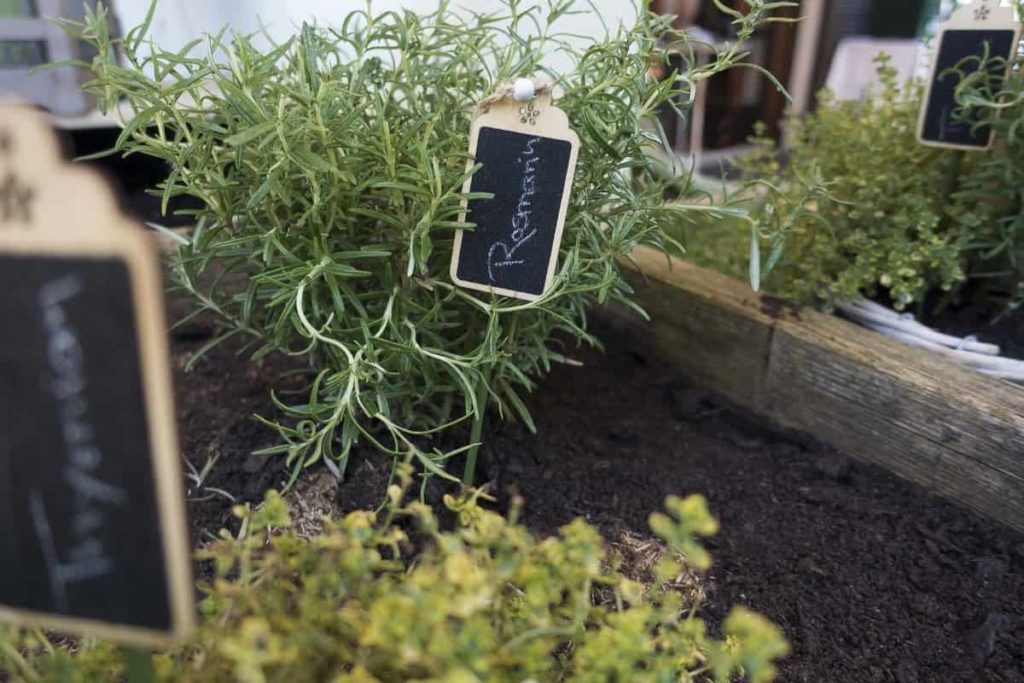
How often should I water my tomatoes in a raised bed?
- Water for a week to 10 days daily to set up new plants. When the temperature is hot, Tomato plants need 1 to 2 inches of water a week.
- Water the plants daily in the morning at the beginning of the growing season. As the temperature rises, you may need to water the tomato plants twice a day.
What grows best in a raised garden bed?
- Raised beds are the most common way to grow vegetables in home gardens. They are warm, drain well, and allow you to control the soil, extending the growing season in early spring.
- Some of the annuals you want to grow in your raised bed garden are Petunia, Pansies, Basil, Lemongrass, and vegetables like Tomatoes, Potatoes, Peppers, Squash, and Onions. To help reduce the likelihood of disease and pests, you don’t want to grow vegetables in one place yearly.
What direction should raised beds face?
- The north-south direction is ideal for low-growing crops, allowing direct sunlight to reach both sides of the bed. The east-west side works best for taller crops like Pole Beans, Peas, and Tomatoes. Leave enough space between the beds to maneuver around easily.
- You don’t need much space to build a raised bed garden. You need a place that gets full sun for most of the day, at least 6 hours. These edible plants need plenty of sunlight to mature and set fruit for your harvest. So, the sunniest area on your property will be the best garden place.
How do you make a simple raised garden bed?
- Get the wood and soil– The best type of wood for raised beds is something that resists rot, such as Cedar, white chestnut, or pressure-treated lumber. Choose the best soil.
- Choose your location – Choose a space that receives plenty of sunlight and is close to the water source. If the area is grassy, cut it short before building your bed.
- Create the frame – Position the boards to form a square; the board should be on their edges. Pre-drill holes, then tie the boards with four screws on each corner.
- Assemble the bed – Cover the area where you plan to place your raised bed next to the landscape fabric, using enough to move slightly beyond the frame edges to help keep the wood from rotting. Set the raised bed frame in place.
- Plant – It’s time to settle your new raised bed with your favorite plants. Plant young vegetable and herb plants, and you’ll have an instant sense of success, plus the harvest time will be much closer.
In case you missed it: Vegetable Spacing in the Raised Bed Garden
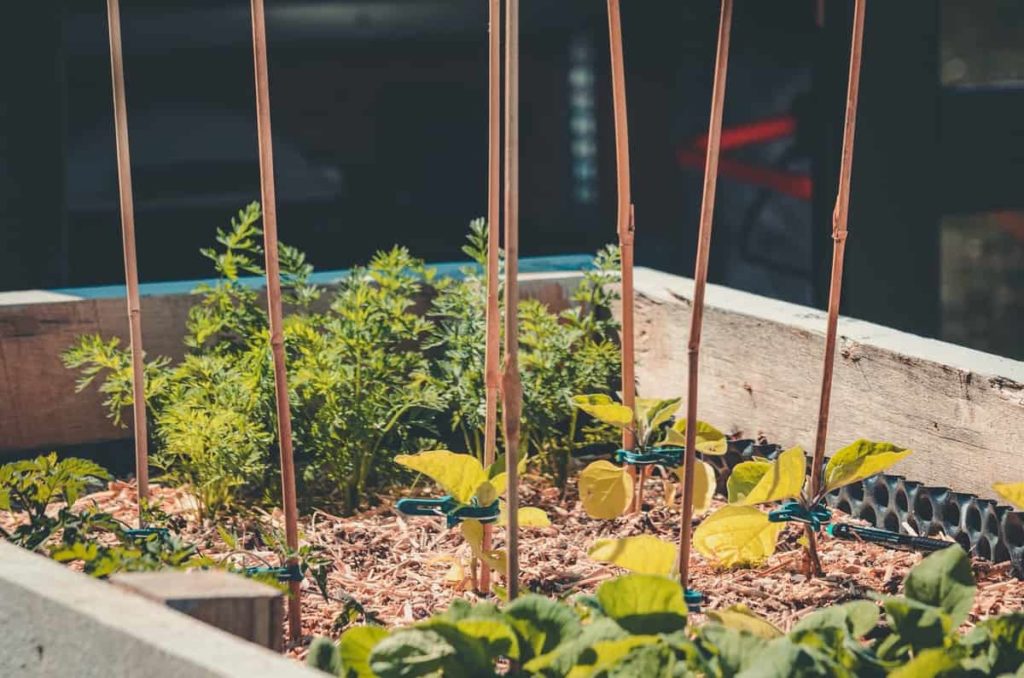
Conclusion
The biggest benefit of raised beds comes from the structure’s protection from pedestrian traffic, especially from children working in the garden area. The weed population decreases over time into a raised bed that is well maintained and mulched. In addition, a well-developed raised bed allows better drainage to the soil than a ground garden. Where the soil drains so poorly that raised beds make it possible to garden crops that would not otherwise grow.
- How to Grow Hibiscus from Flower
- Plantation Ideas for Home Decoration: A Beginners Guide
- Flower Garden Designs and Layouts for Beginners
- Planting and Spacing Techniques in Papaya: A Beginner’s Guide
- Growing Gold: Essential Techniques for Planting Pineapples
- How to Make Kalanchoe Plant Bushy: Home Remedies and Solutions
- 11 Reasons Why Your Gardenia is Not Blooming: Home Remedies and Solutions
- Eco Elegance: The Guide to Designing a Drought-Tolerant Landscape
- Gardening on a Slope: Strategies for Hillside Landscaping
- Nourish and Flourish: Top Organic Mulches for Thriving House Plants
- Everything You Want to Know about Indian Mogra Flower: Discover Uses and Growing
- Green Thumb Success: Expert Tips for Cultivating Greenhouse Pumpkins All Year Round
- Maximize Growth & Flavor: The Ultimate Guide to Companion Planting in Herb Gardens
- How to Control Rhododendron Problems Naturally: Home Remedies and Organic Ways to Fix Them
- Natural Magic: The Remarkable Benefits of Cinnamon for Plants
- Best Steps to Revive Dying Tulip with Natural and Organic Treatment
- 10 Reasons Why Your Angel Trumpet is Not Blooming: Remedies and Treatment
- How to Fix Periwinkle Leaf and Flower-Related Problems: Natural Remedies and Solutions
- How to Fix Zinnias Leaf and Flower Problems: Discover Natural and Home Remedies
- Organic Steps to Induce Lemon Tree Flowers: A Comprehensive Guide
- Bloom Booster: Crafting the Perfect Homemade Bougainvillea Fertilizer
- Optimizing Growth: A Guide to Applying NPK Fertilizer for Potted Plants
- 10 Best Homemade Fertilizers for Rubber Plant: DIY Recipes and Application Method
- How to Boost Female Pumpkin Flowers: Effective Steps for More Flowers and High Yields
- Transform Your Indoor Garden: Top Benefits of Pink Salt for Houseplants
- 10 Best Homemade Fertilizers for Peacock Plants (Calathea): Easy DIY Guide
- Unlock Blooms: 9 Reasons Why Your Potted Chrysanthemum is Not Blooming
- 8 Reasons Why Your Potted Hibiscus is Not Blooming: Fix it with Simple Solutions
- Unlock Blooms: 9 Key Reasons Your Potted Frangipani Won’t Flower
- 10 Reasons Why Is My Ice Plant Not Blooming: Remedies and Treatment
- 10 Reasons Why My Potted Hydrangea Not Blooming: Treatment and Remedies
- 10 Reasons Why is My Wisteria Not Blooming: Remedies and Treatment
- 10 Reasons Why is My Goldfish Plant Not Blooming: Remedies and Treatment
- Maximize Your Space: Ultimate Guide to Balcony Gardening with Grow Bags
- 10 Reasons Why Your Iris is Not Blooming: Remedies and Treatment
- 10 Reasons Why Your Anthurium Plant is Not Blooming: Treatment and Remedies